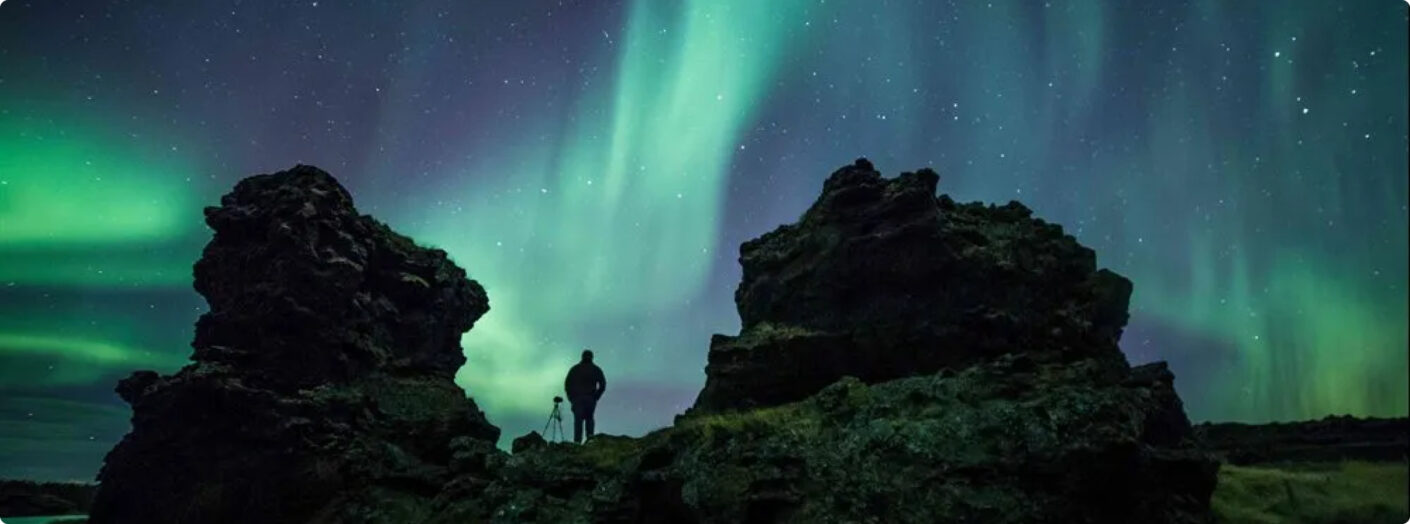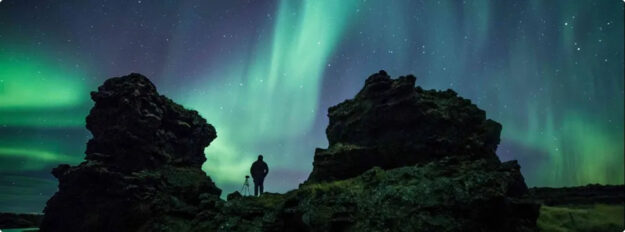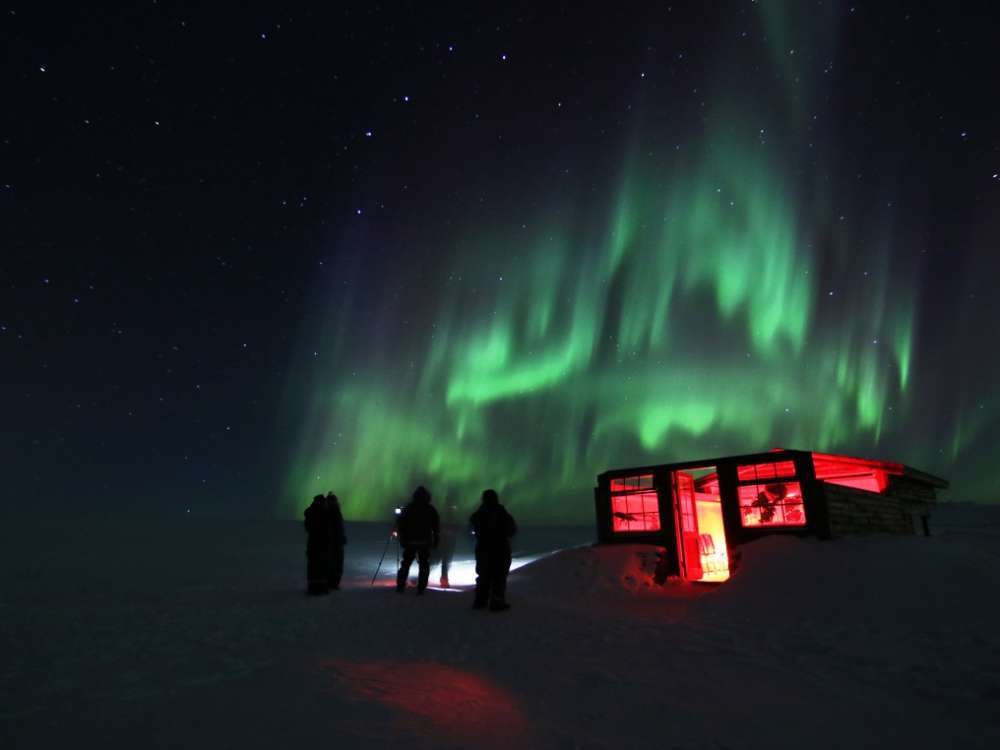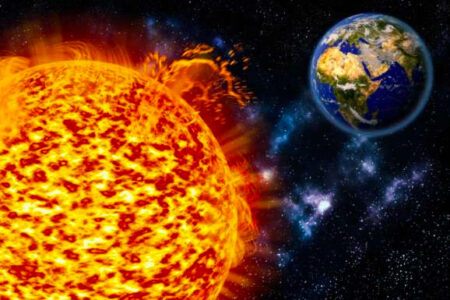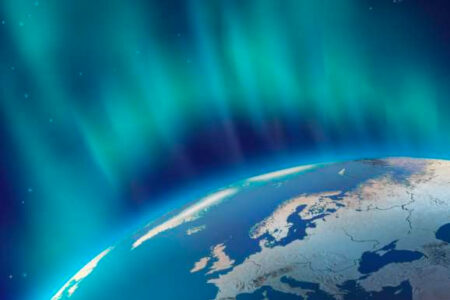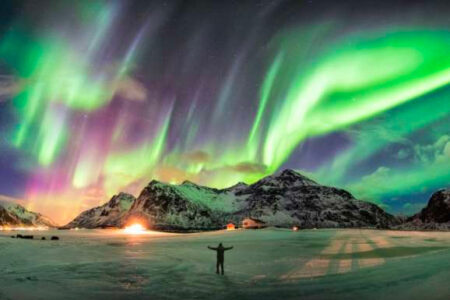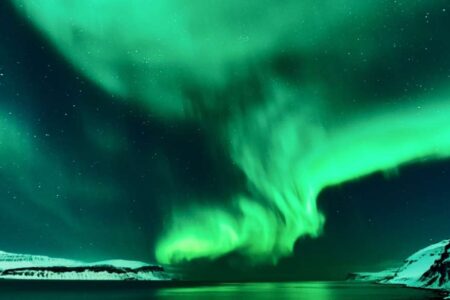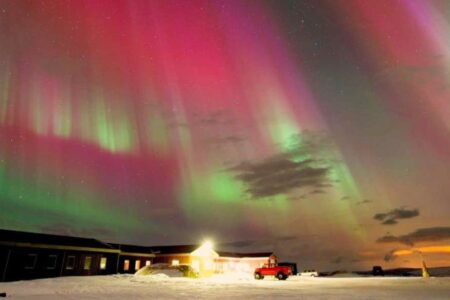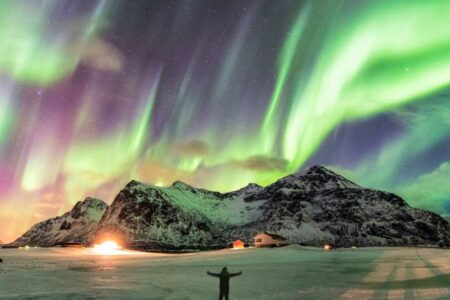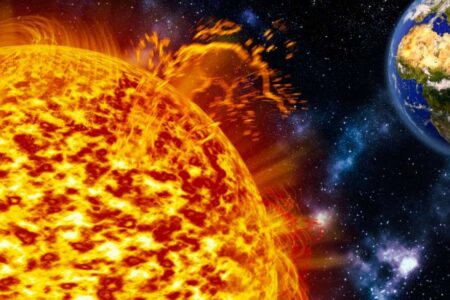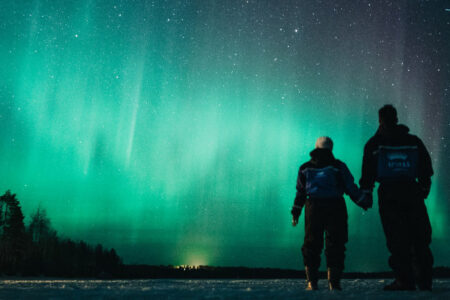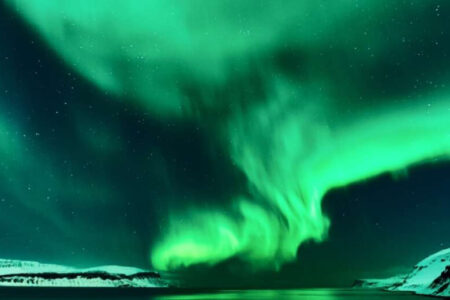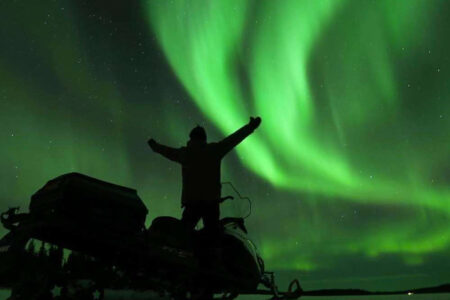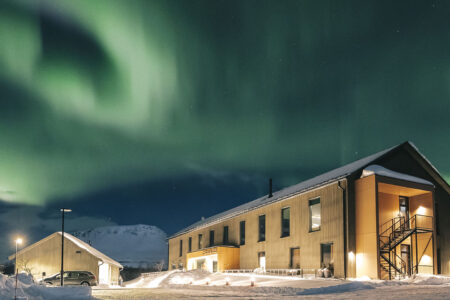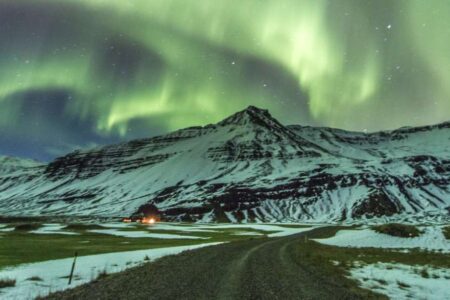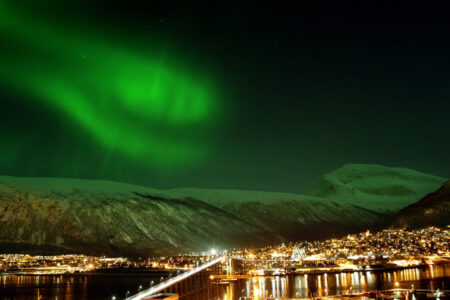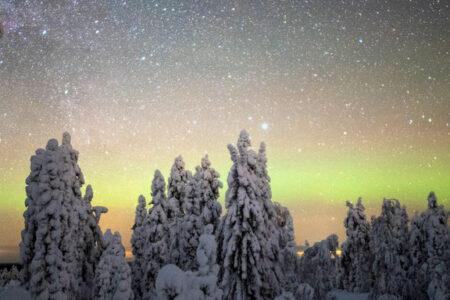Why are there different colours?
Earth’s atmosphere is made up of different gases. The colours of the aurora borealis vary depending on the type of gas that solar particles collide with. The altitude of the collision also plays a role.
For example, when solar particles collide with oxygen at lower altitudes, we get a green aurora. At higher altitudes, an oxygen collision produces scarlet colours.
Purple, blue and pink auroras are created when solar particles collide with nitrogen atoms. These colours are seen less frequently, only during times of intense solar activity.
What is the solar cycle?
The strength and visibility of the northern lights vary according to a number of factors. The intensity of solar activity is one of them.
Solar activity goes up and down over the course of an 11-year solar cycle. The peak of the cycle is called the solar maximum.
During this time, there are a lot of sunspots on the surface of the Sun. These darker patches, which can be the size of a planet, are a visual sign that a period of intense solar activity is on the way.
That’s because sunspots are often accompanied by coronal mass ejections — huge explosions that send solar particles hurtling into space. When these explosions are directed towards Earth, they can cause spectacular northern lights displays.
Following the solar maximum, solar activity decreases until we reach the solar minimum. Then, the solar cycle starts up again.
Southern lights vs northern lights
The same solar and geomagnetic activity that creates the northern lights is responsible for creating the southern lights (also known as the aurora australis).
The southern lights appear in the southern hemisphere, close to the South Pole. And they look and behave in exactly the same way as the northern lights.
So why haven’t you heard so much about the southern lights?
Probably because there isn’t much landmass around the South Pole. So seeing the southern lights is much trickier than seeing the northern lights.
